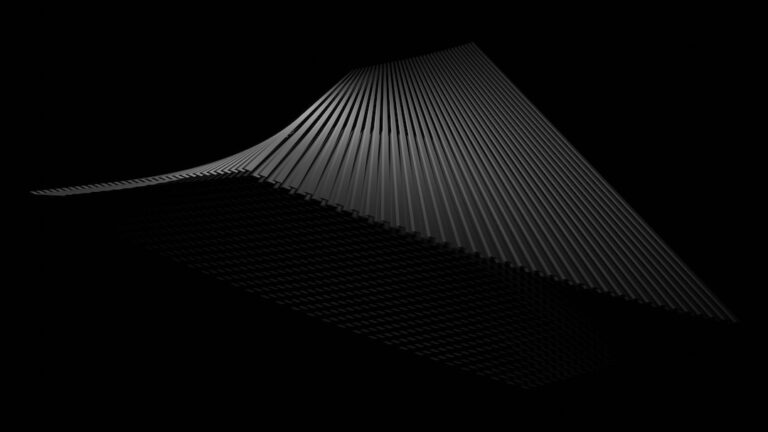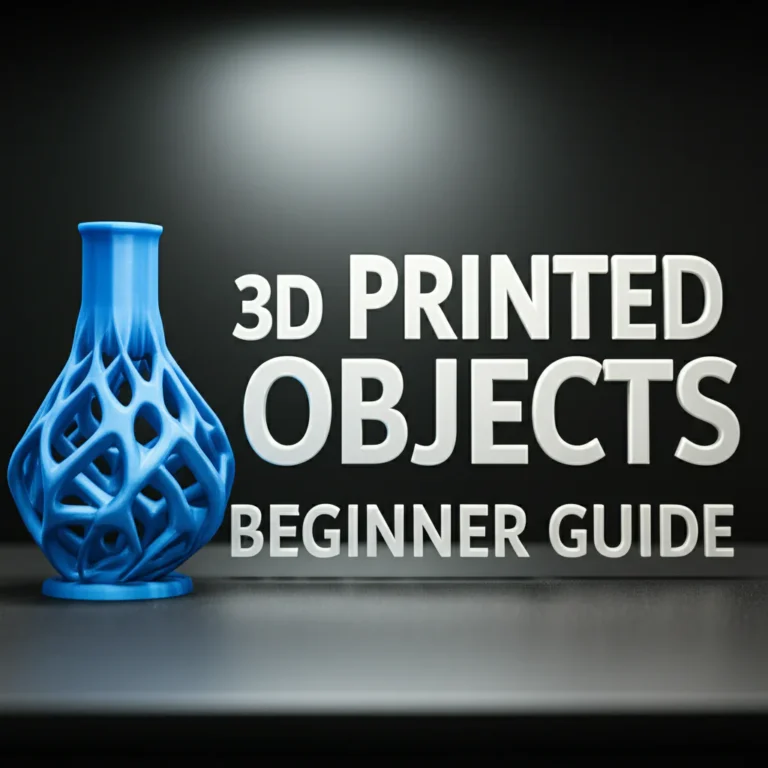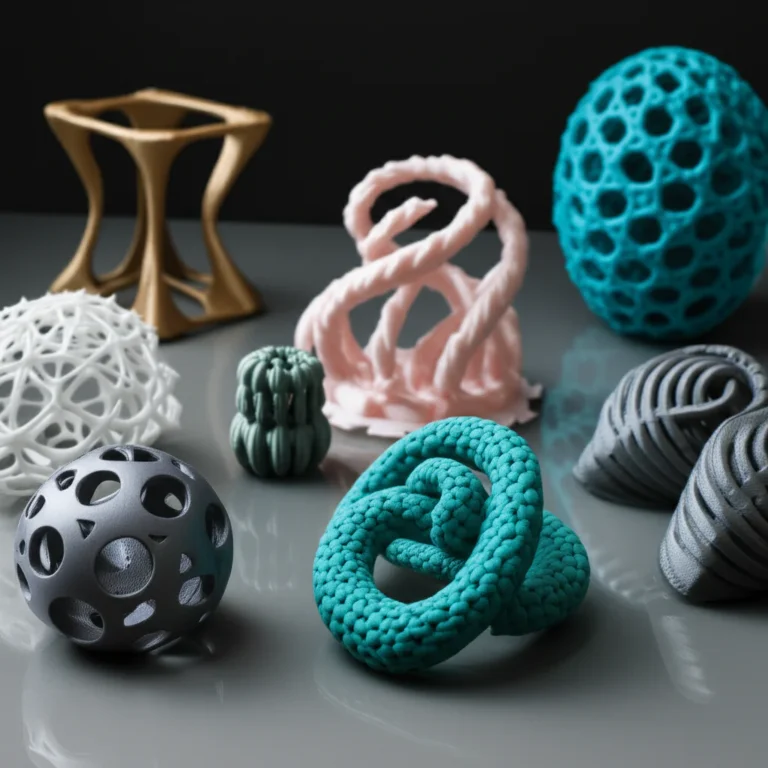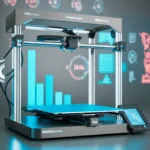Support our educational content for free when you purchase through links on our site. Learn more
Can I 3D Print Functional Tools and Parts? 🛠️ (2025)
Ever wondered if your trusty 3D printer can churn out more than just quirky figurines and decorative trinkets? Spoiler alert: yes, it absolutely can! From custom wrenches that saved our weekend bike repair to replacement gears that kept a lawnmower humming, functional 3D printed tools and parts are no longer sci-fi dreams—they’re practical realities. But before you hit “print,” there’s a lot to consider: the right materials, clever design tweaks, and print settings that transform fragile layers into rock-solid parts.
In this comprehensive guide, we’ll unravel the secrets behind printing tools and parts that don’t just look good but work hard. Curious about which filaments can handle the heat? Or how to tweak your slicer for maximum strength? We’ve got you covered. Plus, we’ll share our top 12 printable tools and parts that you can start making today. Ready to turn your 3D printer into a functional workshop powerhouse? Let’s dive in!
Key Takeaways
- You can 3D print durable, functional tools and parts with the right materials like PETG, Nylon, and ABS.
- Design matters: thicker walls, smart orientation, and stress-reducing features boost strength.
- Print settings are crucial: increasing perimeters, optimizing infill, and controlling temperature improve performance.
- Post-processing techniques like annealing and epoxy coating can dramatically enhance durability.
- Advanced printing technologies (SLA, SLS) offer even stronger, more precise parts but FDM remains accessible and versatile.
- Our top 12 printable tools and parts list will jumpstart your functional printing projects today!
Ready to upgrade your printing game? Scroll down to discover the materials, techniques, and designs that make functional 3D printing possible—and practical.
Table of Contents
- ⚡️ Quick Tips and Facts
- 🚀 The Evolution of Functional 3D Printing: From Prototypes to Production
- 🛠️ Unlocking Utility: Can Your 3D Printer Really Make Functional Tools and Parts?
- 💡 The “Why”: Advantages of 3D Printing Functional Items
- ⚙️ The “How”: Essential Considerations for Functional Prints
- 1️⃣ Top 5 Functional Tools You Can 3D Print Today
- 2️⃣ Top 7 Functional Parts and Replacements You Can 3D Print
- 🌐 Beyond FDM: Exploring Advanced Technologies for High-Performance Parts
- 🏆 Real-World Success Stories: When 3D Printed Parts Saved the Day
- 🚧 Common Pitfalls and How to Avoid Them: Troubleshooting Functional Prints
- 🔮 The Future is Functional: What’s Next for 3D Printed Tools and Parts?
- ✅ Conclusion
- 🔗 Recommended Links
- ❓ FAQ
- 📚 Reference Links
⚡️ Quick Tips and Facts
Welcome to the thrilling world of functional 3D printing! Before we dive deep, here are some quick nuggets from the trenches of 3D Printed™ engineers and enthusiasts:
- ✅ Yes, you can 3D print functional tools and parts! But success depends heavily on material choice, design, and print settings.
- ✅ Wall thickness (perimeters) matters more than infill for strength. Aim for 3-6 perimeters depending on stress.
- ✅ Infill patterns like cubic or adaptive cubic provide stiffness with less print time; avoid 100% infill for strength (it can cause brittleness).
- ✅ Material selection is king: PLA is easy but brittle; PETG and ABS offer toughness; Nylon and Polycarbonate are industrial-grade.
- ✅ Post-processing (annealing, epoxy coating) can dramatically improve durability.
- ✅ Orientation on the print bed affects strength due to layer adhesion anisotropy.
- ✅ Advanced printing tech (SLA, SLS) can produce isotropic, highly functional parts with superior mechanical properties.
- ✅ Functional prints can replace broken parts, create custom tools, or even medical instruments!
Curious about how all this magic happens? Stick with us—we’ll unpack every secret, share real stories, and even reveal some of our favorite printable tools and parts. Ready? Let’s roll!
For a quick primer on 3D printing essentials, check out our 3D Printed™ overview.
🚀 The Evolution of Functional 3D Printing: From Prototypes to Production
3D printing started as a rapid prototyping tool, letting designers quickly visualize ideas. But over the past decade, it’s graduated to producing real, functional parts that can withstand daily use. How did this happen?
The Journey in a Nutshell
- Early Days: Mostly PLA and ABS plastics, limited strength, mostly for models and prototypes.
- Material Innovation: Introduction of engineering-grade filaments like PETG, Nylon, Carbon Fiber composites.
- Advanced Processes: SLA and SLS brought isotropic strength and fine detail.
- Industrial Adoption: Aerospace, automotive, and healthcare sectors now rely on 3D printed functional parts.
- Sustainability Focus: Companies like re:3D are pioneering recycling and on-demand printing in remote or harsh environments (Army article).
Why This Matters to You
This evolution means your home or workshop 3D printer can now make parts that aren’t just pretty—they’re tough, reliable, and useful. Whether it’s a wrench, a replacement gear, or a custom jig, the technology and know-how are within reach.
🛠️ Unlocking Utility: Can Your 3D Printer Really Make Functional Tools and Parts?
Let’s get real: not every 3D printer or filament is created equal when it comes to making functional tools. Here’s what you need to know.
Printer Type & Capability
| Printer Type | Typical Strength | Resolution | Cost | Best For Functional Parts? |
|---|---|---|---|---|
| FDM (Fused Deposition Modeling) | Medium (anisotropic) | Moderate | Low to Mid | ✅ Yes, with right settings and materials |
| SLA (Stereolithography) | High (isotropic) | High | Mid to High | ✅ Excellent for small, detailed parts |
| SLS (Selective Laser Sintering) | Very High (isotropic) | Moderate | High | ✅ Best for strong, complex parts |
Source: Formlabs 3D Printing Materials
What You Can Expect From Your FDM Printer
- Strength depends on print orientation and settings.
- Materials like PETG and Nylon improve toughness over PLA.
- Layer adhesion is the weak point; more perimeters help.
- Post-processing can enhance durability.
Real Talk: Limitations
- FDM parts are anisotropic—they’re weaker between layers.
- Complex geometries with thin walls or fine features may fail.
- Heat resistance is limited unless you use specialty filaments.
But don’t let that scare you! With the right approach, your printer can churn out functional, durable tools and parts.
💡 The “Why”: Advantages of 3D Printing Functional Items
Why bother 3D printing your own tools or parts? Here’s the scoop:
- Customization: Tailor tools to your exact needs or ergonomics.
- On-Demand Production: No waiting for shipping or hunting for rare parts.
- Cost Efficiency: Save money by printing replacements instead of buying new.
- Rapid Iteration: Quickly tweak and improve designs.
- Sustainability: Use recycled filaments or print only what you need.
- Innovation: Create parts that traditional manufacturing can’t easily make.
Anecdote from 3D Printed™ Team
One of our engineers once printed a custom wrench adapter for a vintage bike repair. The original part was discontinued and expensive. The 3D printed version, made with PETG and reinforced with extra perimeters, lasted through dozens of repairs, saving hours of frustration and a small fortune.
⚙️ The “How”: Essential Considerations for Functional Prints
Ready to get your hands dirty? Here’s the step-by-step breakdown to ensure your functional prints don’t just look good but work hard.
🔬 Material Matters: Choosing the Right Filament for the Job
Material choice is the foundation of functional printing. Here’s a quick rundown:
| Material | Strength | Flexibility | Heat Resistance | Ease of Printing | Best Use Cases |
|---|---|---|---|---|---|
| PLA | Moderate | Low | Low (~60°C) | ✅ Easy | Prototypes, low-stress parts |
| PETG | High | Moderate | Medium (~80°C) | ✅ Moderate | Tools, mechanical parts |
| ABS | High | Moderate | High (~100°C) | ❌ Challenging | Automotive, heat-resistant parts |
| Nylon | Very High | High | High (~120°C) | ❌ Difficult | Gears, hinges, wear parts |
| Polycarbonate (PC) | Very High | Moderate | Very High (~140°C) | ❌ Difficult | Structural parts, impact resistance |
| TPU (Flexible) | Low | Very High | Medium | ✅ Moderate | Flexible parts, grips |
Source: Formlabs Materials Guide
Pro Tip: Dry your filament before printing, especially PETG and Nylon, to avoid brittleness and poor layer adhesion.
📐 Design for Durability: Engineering Your Prints for Strength
Your design is only as strong as its weakest point. Here’s how to beef it up:
- Increase Wall Thickness: Aim for 3-6 perimeters (walls). More walls = thicker, stronger shells.
- Avoid Sharp Corners: Use fillets and chamfers to reduce stress concentrations.
- Optimize Layer Orientation: Print parts so stress aligns with layer lines, not across them.
- Add Ribs and Supports: Reinforce flat or thin areas with internal ribs.
- Simplify Geometry: Complex thin features can be fragile.
From the trenches: Our team found that increasing perimeters from 2 to 4 on a wrench handle made it feel like a store-bought tool, echoing advice from the Prusa3D forum.
🎛️ Print Settings for Performance: Optimizing Your Slicer
Settings can make or break your functional print. Here’s what to dial in:
| Setting | Recommendation | Why? |
|---|---|---|
| Perimeters (Walls) | 3-6 | Thicker walls = stronger parts |
| Infill Density | 20-50% | Supports structure; higher for stress areas |
| Infill Pattern | Cubic, Adaptive Cubic | Stiffness with less print time |
| Layer Height | 0.15-0.2 mm | Balance detail and strength |
| Print Speed | 40-60 mm/s | Slower speeds improve layer bonding |
| Print Temperature | Max recommended for filament | Better layer adhesion and tensile strength |
| Cooling Fan | Moderate or off for ABS/Nylon | Prevent warping and layer separation |
| Over-Extrusion | +3-5% | Improves inter-layer bonding (at cost of surface finish) |
Heads-up: Avoid 100% infill for strength; it can cause brittleness and cracking. Instead, focus on walls and smart infill patterns.
✨ Post-Processing Power-Up: Enhancing Your Functional Prints
Don’t stop when the print finishes! Post-processing can transform your part from good to great:
- Annealing: Heat parts in an oven to relieve internal stresses and increase strength (works well with PLA and PETG).
- Epoxy Coating: Apply a thin layer of epoxy resin to seal and strengthen surfaces.
- Sanding and Polishing: Smooth rough edges to reduce stress risers.
- Vapor Smoothing: For ABS, acetone vapor smoothing improves layer bonding and surface finish.
- Reinforcement: Embed metal rods or inserts for extra strength in critical areas.
1️⃣ Top 5 Functional Tools You Can 3D Print Today
Ready to print tools that actually work? Here are our favorites, battle-tested by the 3D Printed™ team:
| Tool | Material | Print Tips | Use Case | Thingiverse Link |
|---|---|---|---|---|
| Adjustable Wrench | PETG or ABS | 4-6 walls, 40% infill | Tightening bolts | Adjustable Wrench |
| Screwdriver Handle | PLA+ | Ergonomic design, 3 walls | Custom bits | Screwdriver Handle |
| Spanner Set | Nylon | High infill, annealed | Mechanical repairs | Spanner Set |
| Cable Organizer | PLA | Flexible design, TPU option | Cable management | Cable Organizer |
| Deburring Tool Handle | PETG | Reinforced grip, 3 walls | Post-processing aid | Deburring Tool Handle |
Pro Tip: Combine printed parts with metal inserts or hardware for hybrid strength.
2️⃣ Top 7 Functional Parts and Replacements You Can 3D Print
Broken something? Don’t panic. Print your own replacement parts:
| Part | Material | Print Tips | Use Case | Thingiverse Link |
|---|---|---|---|---|
| Gear Wheels | Nylon or PETG | High infill, 4+ walls | Robotics, machinery | Gear Wheels |
| Door Handle | ABS or PETG | Thick walls, annealed | Home repairs | Door Handle |
| Hose Connector | PETG | Watertight settings, 3 walls | Plumbing | Hose Connector |
| Camera Mount | PC or Nylon | Reinforced, 50% infill | Photography rigs | Camera Mount |
| Fan Duct | PETG | Smooth finish, 3 walls | Cooling systems | Fan Duct |
| Printer Part (Extruder Knob) | PLA+ or PETG | Precise dimensions | Printer maintenance | Extruder Knob |
| Tool Holder | PLA or PETG | Functional design, 20% infill | Workshop organization | Tool Holder |
🌐 Beyond FDM: Exploring Advanced Technologies for High-Performance Parts
If you want to step up your game, consider these technologies:
SLA (Stereolithography)
- Uses laser to cure resin, producing high-resolution, isotropic parts.
- Ideal for small, detailed tools and molds.
- Materials range from flexible to engineering-grade.
- Example: Formlabs Form 3 offers a wide material palette (Formlabs Official).
SLS (Selective Laser Sintering)
- Uses laser to fuse nylon powder.
- Produces strong, durable, and complex parts with no support structures.
- Great for functional gears, housings, and prototypes.
- Example: EOS and 3D Systems lead this space.
Industrial FDM
- Uses high-performance filaments like Ultem, PEEK.
- Requires specialized printers (e.g., Stratasys Fortus series).
- Used in aerospace and medical fields.
🏆 Real-World Success Stories: When 3D Printed Parts Saved the Day
Here’s where the rubber meets the road. Some of our favorite tales:
- Army’s Gigalab: A deployable 3D printer printing surgical tools and wrenches on-demand in the field, even recycling plastic waste (Army Article).
- Home Workshop Hero: One of our readers printed a replacement gear for a broken lawnmower, saving a costly trip to the shop.
- Medical Innovation: Prosthetics and orthotics printed for remote communities, customized for individual needs.
- Maker Community: Custom jigs and fixtures printed for woodworking and metalworking, improving precision and speed.
🚧 Common Pitfalls and How to Avoid Them: Troubleshooting Functional Prints
Even the best plans can hit snags. Here’s what to watch out for:
| Problem | Cause | Fix |
|---|---|---|
| Weak Layers | Poor adhesion, low print temp | Increase temp, slow speed, dry filament |
| Warping | Cooling too fast, ABS shrinkage | Use enclosure, adjust fan, print bed adhesion |
| Brittleness | Wrong material or settings | Switch to PETG/Nylon, increase walls |
| Dimensional Inaccuracy | Calibration issues | Calibrate steps/mm, check slicer settings |
| Stringing | Too high temp or retraction issues | Tune retraction, lower temp |
| Delamination | Low perimeter count | Increase walls, optimize orientation |
Pro Tip: Our favorite maintenance tools from the featured video — like the deburring tool and microfiber cloths — can save hours of frustration!
🔮 The Future is Functional: What’s Next for 3D Printed Tools and Parts?
The horizon looks bright! Here’s what we’re excited about:
- Multi-material printing: Combining rigid and flexible materials in one print.
- Embedded electronics: Printing circuits and sensors inside parts.
- Recycled filament innovations: Turning waste into high-performance materials.
- AI-driven design: Automatically optimizing parts for strength and weight.
- On-demand manufacturing: Like the Army’s Gigalab, bringing production to the point of need.
The question isn’t can you print functional parts—it’s how far will you push your printer’s limits?
✅ Conclusion

So, can you 3D print functional tools and parts? The short answer: absolutely yes! With the right combination of materials, design, print settings, and post-processing, your 3D printer can produce durable, reliable tools and replacement parts that rival many traditional manufactured items.
Our journey through the world of functional 3D printing has shown us that:
- Material choice is critical — PETG, Nylon, and ABS offer the best balance of strength and durability for most functional prints.
- Print settings matter more than you think — increasing wall count, optimizing infill patterns, and orienting parts properly can make or break your print’s performance.
- Post-processing is your secret weapon — annealing, epoxy coatings, and vapor smoothing can elevate your parts from good to great.
- Advanced technologies like SLA and SLS open doors to even stronger, more precise parts, but FDM remains a versatile and accessible workhorse for many users.
- Real-world success stories prove the concept — from Army deployable printers making surgical tools to makers printing custom wrenches and gears at home.
If you’re wondering whether your home printer can handle it, the answer depends on your printer’s capabilities and your willingness to experiment and optimize. But don’t be intimidated! Start small, learn from each print, and soon you’ll be crafting functional parts that save time, money, and frustration.
Remember our earlier question: How far can you push your printer’s limits? Now you know—the limits are often where your creativity and knowledge meet.
Happy printing, and may your tools never break at the worst moment again! 🛠️✨
🔗 Recommended Links
Ready to start printing your own functional tools and parts? Here are some essential resources and shopping links:
-
Filaments for Functional Prints:
- PETG Filament:
Amazon PETG Search | MatterHackers PETG | Prusa PETG Filament - Nylon Filament:
Amazon Nylon Filament | Taulman3D Nylon | MatterHackers Nylon - ABS Filament:
Amazon ABS Filament | Hatchbox ABS | Prusa ABS
- PETG Filament:
-
3D Printers for Functional Parts:
- Prusa i3 MK3S+ (FDM):
Prusa Official Website | Amazon Prusa i3 MK3S+ - Formlabs Form 3 (SLA):
Formlabs Official | Amazon SLA Printers - Anycubic Photon Mono (Budget SLA):
Anycubic Official | Amazon Anycubic Photon
- Prusa i3 MK3S+ (FDM):
-
Books for Deep Dives:
- 3D Printing Failures: How to Diagnose and Repair All 3D Printing Issues by Sean Aranda
Amazon Link - Functional Design for 3D Printing by Clifford Smyth
Amazon Link - 3D Printing with PETG by Mark Smith
Amazon Link
- 3D Printing Failures: How to Diagnose and Repair All 3D Printing Issues by Sean Aranda
❓ FAQ

What materials are best for 3D printing functional tools?
The best materials balance strength, flexibility, and heat resistance. PETG is a top pick for general-purpose functional parts due to its toughness and ease of printing. Nylon offers excellent strength and flexibility but requires more precise printing conditions. ABS is heat resistant but prone to warping and requires an enclosure. For high-end applications, polycarbonate and carbon-fiber reinforced filaments provide superior performance but demand advanced printers.
Read more about “Can I 3D Print Functional Tools & Machinery? Your Ultimate 2025 Guide 🛠️”
Can 3D printed parts withstand high stress and heat?
Yes, but it depends on the material and print parameters. Nylon and polycarbonate can handle higher stresses and temperatures (up to ~120-140°C). Proper print orientation, increased wall thickness, and post-processing like annealing improve strength. However, standard PLA parts are brittle and low heat resistant, so they’re unsuitable for high-stress or high-temperature applications.
Read more about “What Is the Most Widely Used 3D Printing Material? Top 7 in 2025 🔥”
How durable are 3D printed tools compared to traditional ones?
3D printed tools can be surprisingly durable, especially when designed and printed with strength in mind. While they may not always match injection-molded or forged metal tools in toughness, many printed tools serve well for light to moderate use. Hybrid designs combining printed parts with metal inserts can bridge the gap. Durability also depends on layer adhesion, infill, and material choice.
Read more about “25 Mind-Blowing 3D Printed Creations & Tips for 2025 🎨”
What types of 3D printers are suitable for printing functional parts?
- FDM printers are the most accessible and versatile for functional parts, especially with engineering filaments.
- SLA printers produce highly detailed, isotropic parts ideal for small tools and molds.
- SLS printers offer the best strength and complexity but are generally industrial-grade. Choosing depends on your budget, part size, and required mechanical properties.
Read more about “Are There Any Free 3D Printing Software? 7 Best Picks for 2025 🎉”
Are there design considerations for 3D printing functional tools?
Absolutely! Design for 3D printing functional parts involves:
- Increasing wall thickness (3-6 perimeters)
- Avoiding sharp corners and stress concentrators
- Optimizing part orientation for strength
- Adding ribs or fillets for reinforcement
- Simplifying complex geometries to reduce failure points
Read more about “📊 15 Eye-Opening Statistics About 3D Printing in 2020”
Can I customize 3D printed tools for specific tasks?
Yes! One of 3D printing’s biggest advantages is customization. You can tailor tool size, shape, ergonomics, and features to your exact needs. Many online repositories like Thingiverse offer customizable designs, or you can design your own using 3D design software.
Read more about “35 Genius Ideas for 3D Printed Items for Home & Office Use (2025) 🖨️”
What post-processing techniques improve the strength of 3D printed parts?
- Annealing: Heating parts to relieve stress and increase crystallinity.
- Epoxy Coating: Adds surface strength and water resistance.
- Vapor Smoothing: For ABS, acetone vapor smooths layers and improves bonding.
- Sanding and Polishing: Removes stress risers.
- Embedding Inserts: Metal rods or threaded inserts improve mechanical connections.
Read more about “What Products Can Be 3D Printed? 40+ Amazing Items in 2025 🚀”
📚 Reference Links
- Prusa3D Forum on Functional Strength Settings
- Army Article on re:3D Gigalab
- Formlabs Guide to 3D Printing Materials
- Formlabs Official Website
- Prusa Research Official Website
- MatterHackers Filament Store
- Thingiverse 3D Printable Models
- 3D Printed™ 3D Design Software Category
- 3D Printed™ 3D Printing Innovations Category
- 3D Printed™ 3D Printer Reviews
- 3D Printed™ 3D Printable Objects
Happy printing and may your functional parts always fit perfectly and last long! 🛠️✨





